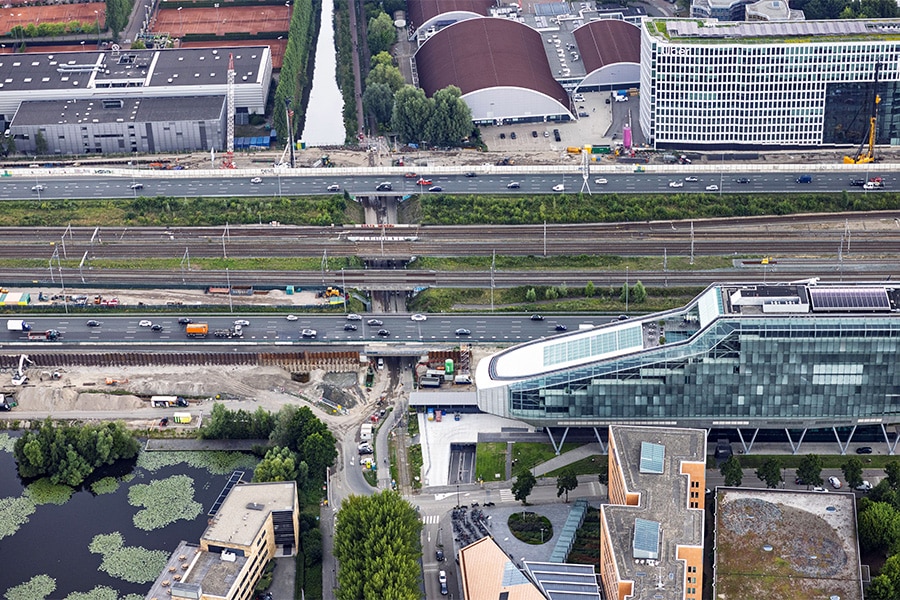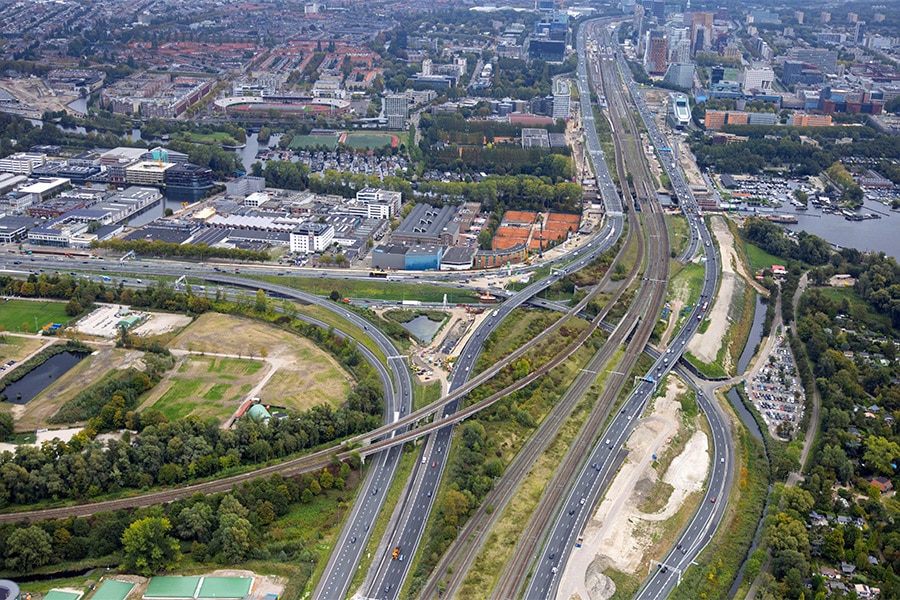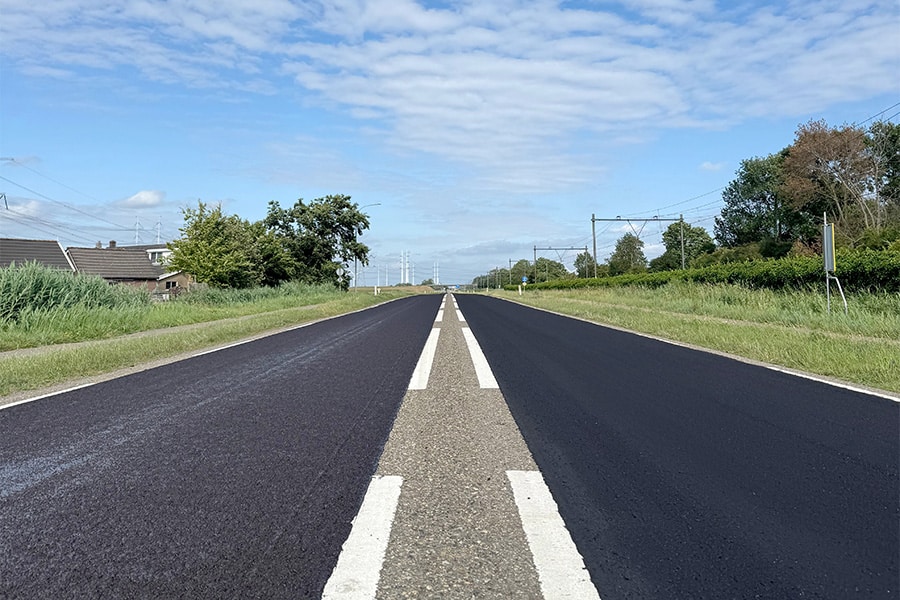
Dual role for geotechnical engineering firm
Due to the complex and settlement-sensitive environment surrounding the A.C. de Graafweg (N241), engineering firm BT Geoconsult is fulfilling a "double role. The geotechnical engineering firm was engaged by Boskalis in the construction team for the geotechnical design of the road and at the same time by subcontractor Van Baarsen Buisleidingen in connection with the relocation of the PWN drinking water transport pipeline.
The geotechnical road design obviously has a lot of overlap with the drinking water transmission line, which is largely located parallel to the road, says Sebastiaan Maan of engineering firm BT Geoconsult. "Because of the overlap of a lot of geotechnical work, it is efficient to keep that in one hand. We started by interpreting the requirements
in the IDO phase (similar to VO). There was a set of requirements, but there had to be an interpretation of those requirements. With
other words, how are we going to demonstrate one and other? After some discussion back and forth, we determined the geotechnical parameters based on the results from the soil investigation."

Critical positions
PWN's drinking water transport pipeline along the road is a concrete pipe that was laid in the 1930s. "The pipe still complies fine, but could possibly collapse as a result of the work (read: pre-loading) for the realignment of the A.C. de Graafweg. So caution is called for, logically," Maan acknowledged. "We therefore mapped out the critical positions in the preliminary phase and determined whether, for example, applying pre-loading on one side of the road would have an effect on the drinking water transmission line on the other side. In this way, the entire route was examined and, in parallel, the measures were determined to ensure that the new road would soon meet all the settlement and stability requirements set by the client. This is where our 'double role' came into its own. We were able to consider the requirements for the transport pipeline and the road design integrally. This revealed, among other things, that the outlined example of preloading across the road does not pose much risk. By contrast, preloading close to the drinking water transport pipeline does require measures. For example, a 2-phase pre-loading is prescribed at a number of positions. First, part of the preload is applied. Then the new pipeline is laid and the old one removed, after which the last part of the preload is applied."

Tasterp
At those positions where the new transport pipeline connects to the existing water pipeline, the requirements regarding settlement are even more stringent. "Here we opted for a lightweight embankment construction with Bims," Maan explains. "In yet other places, we were able to make optimizations in the design from EPS to Bims or even modified in such a way that no lightweight construction was required at all. That is the advantage of working in a construction team as a geotechnical engineering firm; we can switch quickly among ourselves and make such changes. A good example of this is the optimization achieved on a fairly long section of almost 2 kilometers. In terms of calculations, this section was on the verge of being preloaded in two phases. We determined this experimentally by applying a 50-meter test embankment at an early stage and by monitoring the behavior intensively. The practical results turned out to be more favorable than the results from the calculation, resulting in substantial savings. That too is really only possible in a construction team with short lines of communication between contractor and client."



Detail engineering
The scope of engineering firm BT Geoconsult extends much further in this project. "We performed the pipe strength calculations for the new pipeline route, as well as took care of the engineering for the three HDD wells," says Moon. "The drainage calculations are also from our pocket. The route that is not being replaced has only been considered, with us prescribing the appropriate measures to ensure that no settlement occurs." Furthermore, engineering firm BT Geoconsult did the necessary detailed engineering, including at the points where four gas pipelines cross the A.C. de Graafweg. "The gas pipelines must also not experience too much settlement. For this we initially drew up a trade-off matrix with the considerations for the various solutions. A lightweight solution with EPS came out on top, both in terms of cost and feasibility in execution. We further developed that choice into the design that is now on the table and will soon be under construction."
The role of engineering firm BT Geoconsult is also crucial in implementation. Based on the monitoring data, it checks whether the settlement matches the calculations. "The moment the calculated settlement is achieved, we only release the preload," says Moon. Engineering firm BT Geoconsult is originally a geotechnical engineering firm, but as this project again shows, the scope is much larger. "All our work interfaces with geotechnical engineering. Thereby we are much active in hydraulic engineering, in dikes and quay constructions, but our expertise is also requested in the construction of wind farms, such as crane stands, construction roads and the transport of heavy components."




